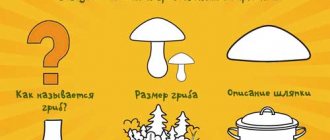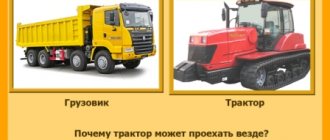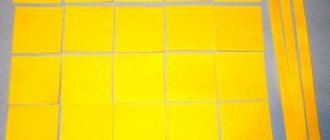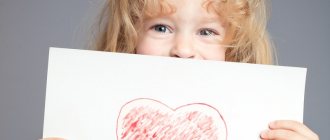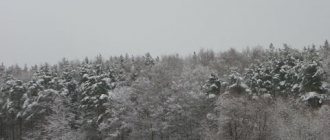Subject; "Bread is the head of everything"
Open lesson on speech development on the topic: “Bread is the head of everything” Purpose: To improve children’s knowledge about the importance of bread. Objectives: To develop children’s knowledge about the sequence of growing bread. Educational: Developmental: Develop Educate: Cultivate a caring attitude towards bread and respect for the work of people who grow bread. Course of the lesson: Guys, guests came to our lesson today, let's say hello to them. Children say hello in three languages Hello, Hello, Salemetsizderme konaktar! Educator: Guys today we have a lesson on speech development. But before we start our lesson, let's all stand in a circle and greet each other. Invented by someone, simple and wise. When meeting, say hello - Good morning, Good morning - to the Sun and the birds! Good morning - To smiling faces. And everyone becomes kind and trusting. Let good morning last until evening. Sit down guys, tell me what time of year it is now? - Spring. What month is it now? - April. Guys, name three spring months. - March April May. Guys, let's remember how many days there are in one week? – 7 What are the two days off called? What are the other days called? - Workers. Who wants to list the days of the week? What day of the week is it today? Guys, I want to tell you a riddle. Guess easily and quickly soft, fluffy, and fragrant. It is black, it is white, and sometimes it is burnt. Without it, it’s a bad lunch; there’s nothing tastier in the world. (Bread) That's right, children, this is bread, today we will talk about bread. The topic of our lesson: Bread is the head of everything! S/M knock on the door, guys, someone is knocking on us, let me see who it is. They handed us a basket, and he brought in a basket of bread. Let's open the napkin and see what's there? (bread) That's right, guys, bread. What can you say about bread? Delicious, aromatic, appetizing, white, soft, rye, wheat, gray, hot. Guys, what is the word white in Kazakh? Ak, and in English Uait What will it be like in Kazakh, the word black? Kara, and in English blek And how will it be in Kazakh, the word delicious? Damdi, and in English sweet How will the word bread be in Kazakh? Nan, and in English bread What is the word soft in Kazakh? Zhumsak soft. Educator: Guys, how many of you know poems about bread? (Children recite poems about bread) Guys, now let’s see how bread got to our table. Show a video about bread. Educator: the guys saw how long the bread traveled to get to our table. Guys, you’re probably tired, let’s get up, go all the way to the palace, make a big circle, and have a physical education session. Physical education minute. A grain fell into the ground and began to grow in the sun. The rain watered the ground, and the sprout grew. He reached out to the light and warmth, and turned into a spikelet. Educator: Guys, we watched the video. Now I want to play a game with you. The game is called “Chain.” To do this, we need to go to the palace again, everyone squat down. I will ask you questions, and if you know the answers to them, you will have to stand up, give an answer and sit down again. Let's listen carefully. 1 Guys, who knows how bread got to our table? (they buy it in the store) 2 How did the bread get to the store? (From the bakery) 3 What do they do in the bakery? (Bake bread) 4 And where do you get flour from? (From grains) 5 Where does the grain come from? (From a spikelet) 6 Where does the spikelet come from? (Grows in the ground in the field) 7 And who does this? (Grain growers) 8 Guys, who are grain growers? (These are the people who grow bread) Well done guys, sit down. Educator: Guys, tell me what proverbs about bread do you know? Lots of snow, lots of bread. Shahsultan If you want to eat rolls, don’t sit on the stove. Rahim At lunch, bread is the head of everything Dasha Zolotukhina. . He who is not lazy to plow will produce bread. Dasha Kalachikova Without labor, bread will never be born. Aigerim. If you waste time, you will lose the harvest. Aizere. Take care of your bread, it is expensive. Ramilya. Never throw away bread. Eldar Respect the work of man. (well done guys) Aisha. Educator: Guys, now let's say in Kazakh Tyiym sozderdi Nanda bir kolymen uzuge bolmaydy Nanda tonkorip koyuga bolmaydy Nanda ayak astyna tastama. Educator: Guys, let's try to guess the riddles; if you guess correctly, pictures will appear on the screen. Puzzles. 1 It grew in a field as a spikelet and lies on the table in a piece? (bread) 2 An iron nose, rooted in the ground, cutting, digging, does the mirror sparkle? (plow) 3 Is he walking, cutting a wave, is grain flowing from the pipe? (harvester) 4 Is he standing in the sun and moving his mustache? (spikelet) 5 Today on the ground, and tomorrow on the table? (bread) Lesson summary: Guys, tell me what lesson we had? (speech development) What did we talk about in class? (about bread) Guys, tell me what conclusions did you draw for yourself about bread? 1Bread is needed by humans as a food product. Daria Z. 2 Bread is grown by people of many professions. Daria K. 3 Their work must be respected. Layla. 4 The bread is tasty and healthy. Shahsultan. 5 In him lies our strength and health. Aisha. With this, guys, our lesson has come to an end, let’s say goodbye to our guests, goodbye, saubolynyzdar!
“Retelling the story “Where the bread came from” - compiling a series of plot pictures”
Transcript
1 Municipal budgetary preschool educational institution of a combined type d/s 40 “Snowdrop” of a combined type Abstract of an open lesson on speech development in the senior group “Retelling the story “Where the bread came from” - drawing up a series of plot pictures” Compiled by: teacher of the 1st qualification category Sorokina Ekaterina Aleksandrovna Osinnikovsky urban district 2014 1
2 Topic: Retelling the story “Where the bread came from” - compiling a series of plot pictures. Goal: To clarify and consolidate children’s understanding of growing bread; consolidate knowledge about who grows bread, where and from what; what grains are flour made from, what types of bread are there. Learn to write a story using pictures. Foster a caring attitude towards bread, respect for the work of the people involved in its cultivation, and cultivate an environmental culture. Material: ball, Move: I. Guys, I’ll now tell you a riddle, and you try to guess it. And then you will know what I want to tell you about. He is black, he is white, and he is always tanned. Whenever we want to eat, we always sit down with him. (Bread). Today we will find out where the bread came from in the bread department of the store. II. Game “Name the profession” Who works on the tractor? Who works on the combine? Who grows the bread? Who works at the mill? Who works at the bakery? III. Children, let us imagine that we are spikelets in a field and do an exercise called “Spikelets” (an exercise to develop coordination of movements “Spikelets”) 2
3 In the spring the field was plowed. The field was sown with grain. The sun is hot. The earth is warmed. The spikelets have risen high, They are reaching for the sun. The wind blows, Koloski shakes. They bent to the right, and swung to the left. And as the rain falls, the driver drinks and drinks Rye. What a field! How beautiful she is. Children make sliding movements of their palms against each other. They touch the fingers of one hand to the palm of the other and move the hand to the side (“sow”). They cross their palms, spread their fingers, raise their hands (“sun”) Lower their hands, making springy movements with their palms open to the floor. Bend your elbows, turn your palms towards each other and slowly raise your arms. They swing their arms above their heads. Tilt the body and arms to the right and left. Slowly they lower their hands. Moving my fingers quickly. Cup your palms and bring them to your mouth (“drink”) Raise your hands, fingers spread. Shake hands above head IV. Examination of a series of paintings followed by discussion. 1. What time of year is shown in the first picture? 2. Where does the tractor work? What is the name of the profession of a person who works on a tractor? 3. What work does the tractor do? 4. What is the name of the technique in the third picture? What work does a seeder do? 5. What work does the plane do? Why do you need to fertilize the field? 6. When does wheat ripen? 7. What is used to harvest wheat? What is the name of the profession of a person who works on a combine? 8. What is bread made from? 9. What needs to be done with wheat grains to make flour? 10. Where are beeches and loaves baked? Who bakes them? 11. Where is the bread then taken? 12. How should you treat bread? 3
4 VI. Compose a story together with the teacher. Spring has come. The snow has melted. Tractor drivers went out into the field to plow and loosen the soil for future grain. The grain growers sowed grain into seeders and began to scatter it across the field. And then a plane took off into the sky to fertilize the wheat field. The fertilizer will fall into the ground, and the wheat will grow and ripen. By the end of summer, the wheat field will be in full bloom. Combine operators will go out into the field. Harvesters will float across a wheat field, as if across a blue sea. The threshed grain is ground into flour. In the bakery they will bake warm, fragrant bread from it. And they will take you to the store. VII. Game “Name it affectionately” 1. Ear 2. Loaf 3. Grain 4. Bagel 5. Bagel 6. Loaf 7. Land 8. Store, etc. VIII. Physical education lesson: The snow will melt in a clean field, the melt water will subside - it will run after the tractor driver to the blue furrow river. Then the seeders will come out to sow the fields with grain. 4
5 IX. Continuation of children's stories. X. Summary of the lesson. Where did the bread grow? What was it made from? Where bread is baked, and what professions people worked to grow bread. We learned that there is such a profession as a grain grower who grows bread. XI. Children are invited to recite poems about bread. 5
Bread is the head of everything. Lesson for preschoolers
BREAD IS THE HEAD OF EVERYTHING
The central wall of the music hall is decorated with an image of a loaf on a beautiful embroidered towel.
The loaf is decorated with ears of wheat and wildflowers. There is an exhibition of bakery products on a table covered with an embroidered towel. Children, accompanied by calm music, enter the music room and sit on chairs. Leading.
Guys, guess what is on my tray under the napkin?
He is black, he is white, and he is always tanned. When we want to eat, we always sit down with him. Children.
Bread!
Presenter.
That's right, children.
Today we are gathered here to talk about bread. The people have a saying: “Bread is the head of all life.” He is famous first on earth, He is placed first on the table. (A. Bayanov)
Do you know what bread smells like?
A loaf of rye, labor bread? It smells like a field, a river, an oven, the sky! And most importantly, the bread smells like work! (Ya. Tubin)
Look, here I have some black rye bread.
But white, soft, wheat. The presenter invites the children to touch and smell the bread.
What words can you use to describe bread?
What is he like? Children.
Warm, soft, fragrant, rosy, fluffy, aromatic, with a crispy crust.
1 child.
Here it is, a fragrant bread, with a fragile twisted crust, here it is, warm, golden, as if filled with sunshine.
How many hands raised him! Protected and protected! 2nd child.
After all, the grains did not immediately become the bread that is on the table.
People worked long and hard on the earth. (S. Pogorelovsky). Children perform “The Song of Bread,” music by V. Vitlin, lyrics by P. Kaganova. Presenter.
We all eat bread every day.
Many of you love baked goods, rolls, gingerbreads, various cookies, and cakes. How many of you know what they are all made of? Children's answers. Presenter.
What is flour?
Where is it obtained from? Children's answers. Presenter
.
Wheat flour is obtained from wheat grains, and rye flour is obtained from rye grains. To obtain flour from grains, you need to spend a lot of labor: first grow rye and wheat, then harvest. This is what grain growers do. Guys, do you want to know what kind of work this is? Children's answers. Presenter.
First, grain growers prepare the soil for sowing.
In the fall, they use special spreading machines to apply fertilizer to the fields. Then tractors plow the ground, mixing fertilizers with the soil. At the same time, harrows are used to loosen the soil so that there are no lumps. In the spring, as soon as the ground dries out, tractors go out into the field. Who is driving the tractor? Children
.
The tractor is driven by a tractor driver. Presenter.
The tractor pulls an iron plow, which plows the ground deeply.
3 child.
Tractors go out into the steppes, pulling plows on a trailer.
They cut with a plow, like a knife, Fat, juicy black soil. (S. Pogorelovsky) Presenter.
And now the earth became soft and loose.
You can start sowing! Special seeders are attached to tractors. From them, the grains fall into the ground in even, neat rows. 4 child.
Golden grains will fall into the soil, stalks will rise above the black arable land.
And the sun will warm you up warmer, And the earth will turn green like a carpet. Under the spring rain, wheat will grow and ear. (M. Poznanskaya). Children.
Rain, rain!
Rain, rain! All fields, hurry up! The girls perform the Rain Dance with blue ribbons, music and movements chosen by the music director. Presenter.
After spring, summer will come and the ear of grain will unnoticed.
So the wheat has sprouted. The grains in the ears ripen all summer. Let's imagine that we are all golden ears. Children improvise “Dance with Ears”, music chosen by the music director. After the dance, the children sit down. Presenter.
But the grains are ripe.
The harvest begins. Harvesters enter the field. Who works on the combine? Children.
A combine operator is working on a combine.
Presenter.
The combine cuts the ears and threshes grains from them.
These grains are poured into trucks through a special long sleeve. 5 child.
The bread was ripe, but it didn’t come to our table straight from the field.
It’s too early for Bread to leave the field even to go to the shops. He got on the car and hurries to the elevator. (P. Sinyavsky). Presenter.
To obtain bread and other bakery products, grain is transported from elevators to flour mills or flour mills.
There it is ground into flour. 6 child.
There's wheat in the mill.
This is what's happening to her here! They will take it into circulation and grind it into powder! (S. Pogorelovsky). 7 child.
The grains have become flour, They won’t give it peace either: A truck is carrying flour to a large bakery.
8 child.
In a large bakery, that flour will become dough.
Hurry up and put the dough in the oven – you’ve got a loaf! Presenter.
So they brought the flour to the bakery.
There they will bake delicious, aromatic bread, buns, loaves, bagels, everything that no breakfast, lunch or dinner can do without. 7 child.
A warm, bready smell pours out from the automatic winding machine.
Just like that Buns, cakes and cheesecakes, Easter cakes and rolls, Sweet gingerbreads are jumping out of the oven. (P. Sinyavsky). Presenter.
You see, guys, how much work it takes to get bread.
The Russian people have always treated bread very carefully. The Russian people have come up with many proverbs and sayings about this important product. Which ones do you remember? Children tell proverbs and sayings about bread.
- Bread is the head of everything.
- Don’t open your mouth to someone else’s loaf, but get up early and get your own.
- Not a piece of bread, and there is sadness in the house.
- Grandfather's rye bread rolls.
- And lunch is not lunch if there is no bread.
- Without salt it is not tasty, without bread it is not satisfying.
- If you want to eat rolls, don't sit on the stove.
- To the word there is faith, to bread there is measure.
- To work well is to yield bread.
- Bread is on the table, and the table is the throne.
Presenter.
Children, please tell me how we should treat bread?
Children's answers. Children read S. Mikhalkov’s poem “Bulka”
Three boys along the alley Playing as if in football, they kicked a bun back and forth and scored a goal with it.
An unfamiliar uncle walked past, Stopped and sighed, And, almost without looking at the guys, He extended his hand to that bun. - Who are you? - the children asked, Forgetting about football for a while. - I am a baker! - the man answered and slowly left with the bun. Presenter.
The following speech has already been heard many times for the guys: “Our bread is the beginning of everything, we must take care of it.”
With mom and dad from kindergarten You will return to your home, They will tell you: “You need to take care of bread, it is created by labor!” Don't forget about this, children, Everything in the world begins with bread! (M. Poznanskaya)
Now help yourself, take some dry bread, cookies, gingerbread. Eat, don’t be shy, gain health and thank those who baked them!
Bread is the head of everything Development of a lesson on speech development
Technological map of organized educational activities
Educational area:
"Communication"
Sections:
"Speech development"
Subject:
“Bread is the head of everything”
Target:
Introduce the genre of oral folk art - proverbs about bread. Develop attention, memory, coherent speech. Develop the ability to creatively depict objects using plasticine. Develop artistic and aesthetic taste.
Equipment:
ears, wheat grains, poastilin, bases for modeling.
Vocabulary work:
"wheat, ear, combine, combine operator, baker, loaf"
Bilingual component:
“nan – bread”, “masak – ear - ear”
| Stages of activity | Teacher's actions | Children's actions |
| Motivational and incentive | Conducts a Circle of Joy “Gift” Reads folk sayings: “Bread is the head of everything”, “Take care of bread, take enough bread for dinner” | Stand in a circle and do exercises. They listen carefully and explain how they understood the meaning of the sayings. |
| Organizational search | Reminds me of the process of growing bread. The story is accompanied by illustrations from the book “How Bread Came to the Table.” Introduces proverbs: “If you don’t work, you won’t get bread”, “If you want to eat rolls, don’t sit on the stove” Physical school Pays attention to the ears of corn. He offers to make a panel. Shows the sequence of work. | They listen to the story, complement it, look at the illustrations, answer questions, and complement the answers of other children. They listen carefully and explain how they understood the meaning of the proverbs. They say in what cases they can be used. Perform physical education exercises. They look at the ears of corn, touch them, describe them. Observe the sequence of work. They start working on their own. |
| Reflexive-corrective | Organizes an exhibition of works. Offers to choose the best. Reads the fairy tale “Spikelet” He asks: does the proverb “He who doesn’t work, doesn’t eat” fit the fairy tale? Summarizes the lesson and notes the most active ones. Reads an excerpt from a poem by Y. Akim: Rye bread, loaves, rolls You won't get it while walking. People cherish bread in the fields They spare no effort for bread. | They help arrange the exhibition and evaluate the works. Listen to a fairy tale. Evaluate the actions of the heroes of the fairy tale. They answer questions about the lesson, share their impressions, and express their opinions. |
Expected Result:
Know:
features of growing bread, the structure of the ear.
Have:
an idea of the genre of oral folk art - proverbs and sayings, about the growth and development of plants.
Be able to:
perform sculpting techniques using a planar method (moulding).
